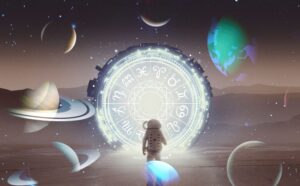The gravitational pull of black holes is so strong that not even light can escape. However, this does not mean their influence on galaxies is exaggerated. For example, Sagittarius A* at the center of the Milky Way affects only about 100 of the galaxy’s 200 billion stars.

Sagittarius A* – Resurce: Wikipedia
The gravitational effect of black holes is no different from that of other celestial bodies; it is just more intense. Gravity causes objects to orbit rather than fall towards each other. Earth continues to orbit the Sun because gravity is an orbital force.
However, when approaching a black hole’s event horizon, tidal effects (spaghettification) come into play. This disrupts the structural integrity of stars and leads to their consumption by the black hole. Yet, this effect is only felt within the event horizon.

Spaghettification – Resource:Wikipedia
For instance, the tidal radius of Sagittarius A* is smaller than the distance between the Sun and Earth. Thus, stars like the Sun remain unaffected by this effect.







